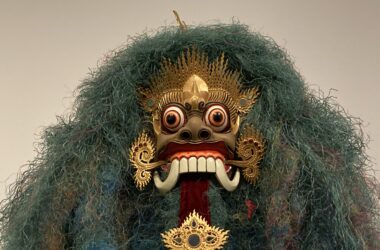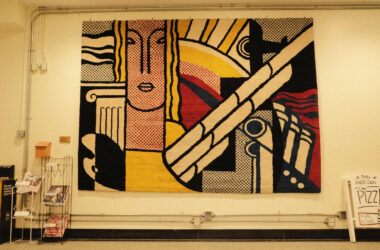Although art historians and casual tourists probably won’t stop peering up at the brilliance of Michelangelo’s Sistine Chapel, the 16th-century Italian Renaissance man may find himself looking up at another art world rival as the top Italian artist in history, according to one renowned art historian.
Phillip Sohm, an art history professor at the University of Toronto who specializes in the Italian Renaissance and the Baroque period, believes that Caravaggio has surpassed Michelangelo in scholarly discourse. Sohm recently presented his findings at the annual College Art Association conference in Chicago.
Sohm’s research tracks the frequency of scholarly publications concentrating on each of the two artists over the last 50 years. The research demonstrates a widening gap around 1996, with Caravaggio garnering over 55 scholarly documents.
Sohm described the phenomenon as “Caravaggiomania.”
“Caravaggiomania appealed to me for its suggestion of obsession and psychological imbalance, thus knitting Caravaggio and his fans together,” Sohm wrote in an email to the Tribune.
Caravaggio is known not only for his artistic ability, but also for his reputation as a recalcitrant rascal.
On May 26, 1606, Caravaggio killed a man named Rannucio Tomassoni over a tennis match and gambling debt. Although historians believe that the murder may have been unintentional, Caravaggio nevertheless fled to Naples. Before he passed away, it was reported in Rome that Carravagio had already died, while in fact he had merely been attacked, leaving him significantly disfigured in the face.
“Would we have Caravaggiomania if Caravaggio had not thrown artichokes at a waiter, swaggered with a sword, trashed his landlady’s place, killed an acquaintance, escaped from prison, and died on a beach?” Sohm asked in his CAA lecture.
Some scholars believe that after Michelangelo’s 500-year reign at the top, art history doctoral candidates are simply struggling to generate original readings of his catalogue. But Sohm does not completely agree with this sentiment.
“Actually, I think that fresh readings of Michelangelo’s work are still possible, but at times areas of study become exhausted, perhaps from the grueling and dispiriting effort required by piles of complicated and incompatible theories,” Sohm said. “This happens in other fields of art history – 19th-century French art studies is now in hiatus after leading the discipline with innovative studies during the 1980s and 1990s.”
So why the extended period of “neglect” and recent emergence?
“Fashions change,” Sohm said. “Those artistic values that Caravaggio challenged, those that took complex compositions with classical references, clarity of expression, and a privileging of the idealized human body as the height of artistic achievement, never disappeared in the 17th century and reasserted themselves as art academies became more dominant.”






